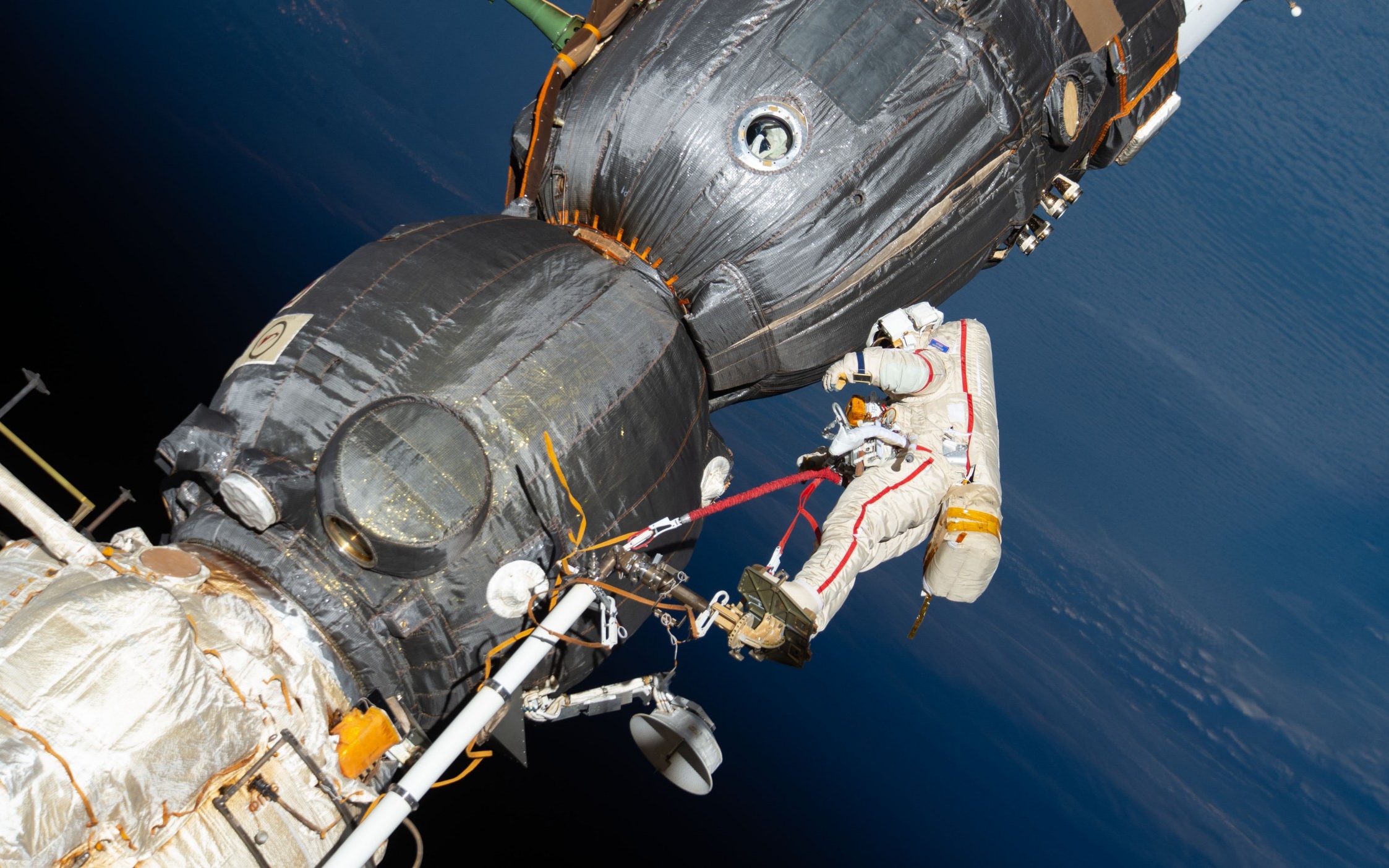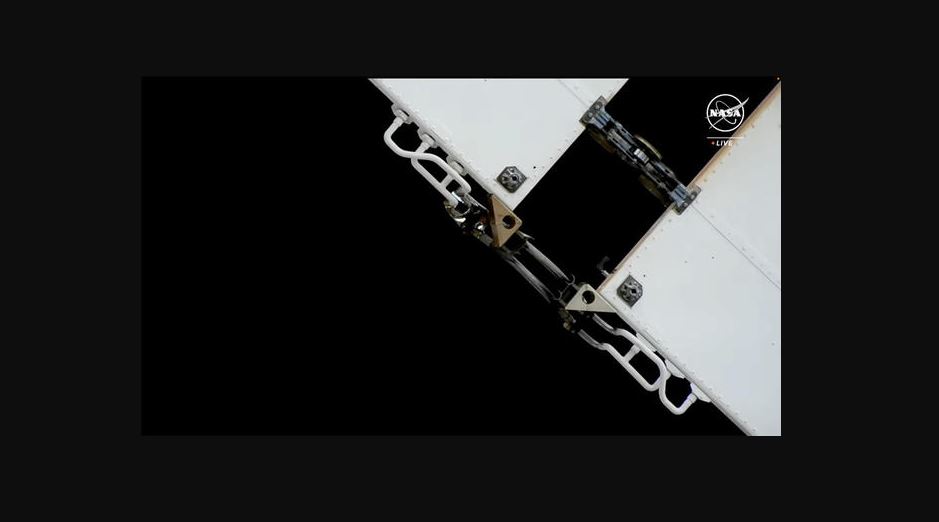Russian Spacewalkers Dodge Coolant Leak And Identify Radiator Damage
Russian spacewalkers dodge coolant leak and identify radiator damage on Wednesday as they conducted a spacewalk outside the International Space Station. As part of their plan, they successfully isolated the leaking radiator, allowing the residual coolant that was still trapped inside to escape into space.
Author:Hajra ShannonReviewer:Paula M. GrahamOct 27, 2023728 Shares34.6K Views

Russian spacewalkers dodge coolant leak and identify radiator damageon Wednesday as they conducted a spacewalk outside the International Space Station. As part of their plan, they successfully isolated the leaking radiator, allowing the residual coolant that was still trapped inside to escape into space.
Cosmonaut Oleg Kononenko had initially intended to absorb the coolant with a cloth towel. However, he was instructed to vacate the area promptly when he reported that some of the liquid had come into contact with a safety tether. He confirmed that none of the coolant had reached his space suit.
The tether that came into contact with coolant was promptly secured in a bag, and established procedures ensured that the cosmonauts' spacesuits were thoroughly cleared of any potential contamination before they re-entered the space station at the conclusion of their spacewalk.
During their spacewalk, Kononenko and his crewmate, Nikolai Chub, continued their tasks, including attaching a small synthetic aperture radar antenna to the hull of the Nauka module. However, they encountered an issue with one of the module's four panels, which did not fully deploy and lock into place. Space officials indicated that adjustments would be needed in a subsequent spacewalk to address this.
Additionally, the cosmonauts released a small "nanosatellite" designed by students, but the solar sail propulsion system it was meant to test failed to deploy. After a final attempt to position the radar panel correctly, the spacewalk came to an end.
Oleg Kononenko, on his sixth spacewalk, and Nikolai Chub, on his first, commenced their excursion into space at 1:49 p.m. EDT by opening the side hatch of the Poisk airlock compartment into the vacuum of space.
The radiator in question was originally launched with the Russian Rassvet module on the space shuttle Atlantis in May 2010. It, along with a small experiment airlock, remained stored on Rassvet until earlier this year, when spacewalking cosmonauts attached both to the Nakua multi-purpose laboratory module.
The installation of the radiator proceeded as planned, and the valves were opened to allow coolant to flow from the Nauka module into the radiator's unfolded panels. However, on October 9, flight controllers observed the presence of flakes emanating from the radiator area. It was later determined that these flakes were actually frozen coolant that was being expelled into space.
In response, Kononenko and Chub conducted an inspection and reset the coolant loop valves. They made adjustments to isolate the radiator from the supply lines and documented the leak site with photographs, providing valuable information for engineers to analyze the cause of the issue.
Initially, Kononenko reported, "the radiator is clean. I don't see anything ... I do not see any traces of coolant.." However, he later observed numerous "black spots" on one of the radiator panels. After modifying the valves designed to separate the radiator from its coolant lines, droplets of coolant were visible, leaking from a connection between two radiator panels.
"The holes have very even edges, like they've been drilled through," Kononenko radioed to the flight controllers working in Moscow Mission Control. "There are lots of them. They are spread in a chaotic manner."
The droplets coalesced to create a rather substantial bubble around the leaking coolant line. Kononenko noted that the bubble was too large to be absorbed by the towel he had initially intended to use. As a result, the cosmonauts decided to leave it as it was, while ground engineers began considering potential courses of action to address the issue. The exact cause of the initial coolant line rupture remained unknown at the time.
This incident marked the third coolant leak experienced by the Russian space program in less than a year. The series of incidents began with a significant rupture that disabled a Soyuz crew ferry ship in December of the previous year. A similar leak had occurred on an unmanned Progress cargo carrier earlier that year.
The presumed cause of the Soyuz leak was a micrometeoroid impact. However, the Russian space agency had not provided an explanation for the Progress leak or the one affecting the Nauka radiator. It appeared highly improbable that micrometeoroids were responsible for all three incidents in systems with similar vulnerabilities.
Despite the latest leak, the Russian space agency, Roscosmos, reassured in a post on Telegram that the primary coolant loop of the laboratory was unaffected, and both the crew and the space station were not in any imminent danger.
Kononenko and Chub did not plan to perform any repair operations. Their main objective was to locate and document the source of the leak and to isolate the radiator from the coolant supply lines to prevent any potential future problems.

Hajra Shannon
Author

Paula M. Graham
Reviewer
Latest Articles
Popular Articles
